 Leading Blog | Posts by Month |
 Leading Blog | Posts by Month |
02.28.13

LeadershipNow 140: February 2013 Compilation
See more on
Posted by Michael McKinney at 10:29 AM
02.26.13

5 Key Practices to Earn Trust
TO TRUST or not to trust is a decision we all make every day. As leaders, we can influence people’s decision to trust not only us, but others in the organization and even the organization itself. Robert Hurley has identified ten specific trust factors in The Decision to Trust. The first three factors are trustor-related: the level of risk tolerance, the trustor’s level of psychological adjustment, and the power position of the trustor.
With these ten factors in mind, you can more easily diagnose why trust may be (or likely to be) high or low in your organization. You can also see what you are contributing to the situation—positively or negatively. Here are five key practices to earn trust: 1. Align your interests with those whose trust you want. High trust leaders try to move their enterprise together by encapsulating stakeholders’ interests not pitting stakeholders against one another. If you want to build trust, start by clarifying and aligning stakeholder interests and prove that you will promote those interests in a fair manner. This may seem to go without saying, but “one of the reasons that trust has broken down in business and society in general is that there are many situations where the complexity of misaligned interests is not acknowledged, must less dealt with.” In these situations, “the best you can do is be clear about interests, decide whose interests will be primary or secondary, and be transparent about what trade-offs you are making and why.” 2. Demonstrate Benevolent Concern. We tend to trust people who we believe will care about our welfare—they demonstrate a benevolent character. People, who appear concerned only with themselves, engender distrust. If you want to earn trust, demonstrate to others that you will do the right thing for them even if it puts you at risk. “Demonstrate a respect for others and understand others’ needs in a way that helps them find win-win solutions.” 3. Develop and demonstrate Capability in the Matter at Hand. We are only trustworthy if we can deliver on our commitments. Good intentions, benevolence, and even ethical conduct, do not warrant trust if the other person is incompetent. High trust leaders make sure that there is a reasonable probability and capability to deliver before they make promises. 4. Create a track record of Predictability and Integrity. High trust leaders tend to practice values based leadership, which creates consistency and coherence in their behavior. Trust comes from always striving to honor ones word. 5. Communicate, communicate, communicate and do it clearly and openly. Because is largely about relationships, communication is critical. Communication is also the vehicle through which the other four elements of trustworthiness are delivered. Aligning interests, demonstrating benevolence, accurately communicating ones capability and practicing what you preach all require effective communication skills. Spirals of distrust often begin with miscommunication, leading to perceived betrayal causing further impoverishment of communication and ending in a state of chronic distrust. Open and transparent communication can induce others to open up and reciprocate with feelings of confident reliance. Of Related Interest:

Posted by Michael McKinney at 10:10 AM
02.20.13

Into the Storm: Lessons in Teamwork from the Treacherous Sydney to Hobart Ocean Race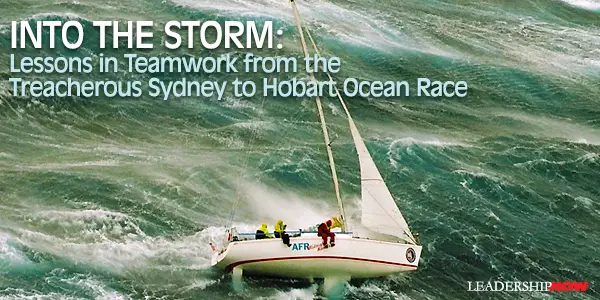
The iconic Sydney to Hobart Race, a 723-mile deepwater challenge—often called the "Everest" of offshore ocean racing—is considered one of the toughest in the world. Unpredictable weather and seas make each race demanding, but in 1998, an unexpected "weather bomb" hit the fleet, creating 80-foot waves and 100-mile-per-hour winds. Many bigger, better-equipped boats tried to maneuver around the storm, but the crew of the AFR Midnight Rambler chose to head directly into its path. After battling mountainous waves and hurricane-force winds in the Bass Strait, the tiny 35-foot boat arrived safely in Hobart, 3 days and 16 hours later—winning the coveted Tattersall’s Cup. THERE are two central themes in Into the Storm. The first is the importance of exceptional teamwork in overcoming challenges at The Edge. The second is the value of distributed leadership—a team culture that allows every person to provide direction when he or she has expertise that will help the team succeed. The story of the AFR Midnight Rambler exemplifies the power of exceptional teamwork and distributed leadership. But where does this leave a formal team leader—the skipper of a boat, the CEO of a corporation, the commanding officer of a military unit, or the President of the United States, for that matter? Is there a unique role that he or she needs to play? I believe there are some critical things—some unique responsibilities—that fall to the skipper. The leader needs to keep the team aligned. The varied performance of boats in the Sydney to Hobart Race underscores the importance of having a coherent, unified team. Some boats, like the Midnight Rambler, demonstrated extraordinary cohesiveness even under the most terrifying, life-threatening conditions. At the other end of the alignment continuum, some crews were fragmented, with key team members at odds with each other—in a leadership vacuum. Adrienne Cahalan, one of the world's best navigators, has had a chance to observe the role of the leader in more than twenty-five years as a professional competitive sailor. She has been named Australian Yachtswoman of the Year twice—and has been nominated four times for World Yachtswoman of the Year. Cahalan characterized the leader's role this way: "Skippers need to keep the team focused. They need to keep an eye out to see if someone is wavering, or a faction developing. They need to have the skill to manage all the personalities, to bring them together, and to get them working toward their common goal. Not everybody's perfect, so a good leader is able to deal with imperfections. And they need to be able to do it all under pressure." Managing personalities and bringing people together can be challenging in any situation. But the pressure of a storm—or a tough business obstacle—calls for exceptional leadership. The leader needs to demonstrate passion. The leader's passion is a magnetic force that pulls other people in. Describing the impact of Ed's enthusiasm, one crewmember observed: "What makes Ed an exceptional leader is his desire to win. He is committed to driving the boat as fast as it can go. And he can take risks because of his comfort and trust in the team." No one who has ever sailed with Ed Psaltis has any doubt about his absolute, total commitment to winning. He is so passionate that his excitement sometimes needs to be offset -- by humor, or by the composure of others. But there is no mistaking the electric spark that comes from a leader who is excited to win. That enthusiasm is contagious, and it is a contagion that leads to victory. The leader needs to instill optimism and confidence that the team will succeed. Ed Psaltis and navigator Bob Thomas have a close relationship. They have complementary personalities, with Bob's cool demeanor balancing Ed's passion. Both Ed and Bob joined forces during the storm, and their combined leadership provided a reassuring presence for the crew. Crew member "Mix" Bencsik recalls: "Their leadership played a large part in making sure that no one gave up. Ed and Bob constantly instilled optimism and confidence that we could handle the conditions, and that the crew had the ability to win." While there was no question about Ed's formal role as skipper, Ed and Bob together reinforced a sense of unified leadership. And because of their close personal relationship, they were able to send a joint message of reassurance and optimism. The leader needs to set an example. Ed realizes that people are watching him, and he makes a conscious effort to set an example. Coming off his watch as helmsman, Ed will take a forward position on the rail. In this exposed position, he is subjected to the first onslaught of water and spray. It is cold and uncomfortable, but it is clear that Ed is not afraid to do his share. Ed will also take his turn in "the bad bunk." It seems that every boat comes equipped with a berth that—for one reason or another—is undesirable. Nobody wants the bad bunk, but Ed makes sure that he takes his turn. He is sending a message. Leaders need to set an example on a daily basis, but there are some moments that are different. There are times when leaders need to inspire others through fortitude, courage, and skill. One such moment came for Ed Psaltis in the 1998 Sydney to Hobart Race. Mix Bencsik reflected: "I've been through a lot of storms with Ed. Sitting on the side of the boat—wave spotting while he was helming -- was something that made me feel really proud. I thought, Here's a person who has my life completely in his hands. He was performing extraordinary feats of strength and seamanship, holding a 35-foot boat on the right course in those conditions." "Ed was giving more than 110 percent. The well-being of the boat and crew were in his hands, and he didn't falter. It was an outstanding feat of seamanship. Even to this day, it's quite emotional to talk about. That was his finest moment." Not every leader has the ability to steer a boat through a storm like Ed Psaltis. But there comes a time when every leader needs to be willing to step up and give "more than 110 percent." For every leader, there can be a finest moment.  
Posted by Michael McKinney at 10:44 PM
02.18.13

Washington’s Lessons: Control Your Weaknesses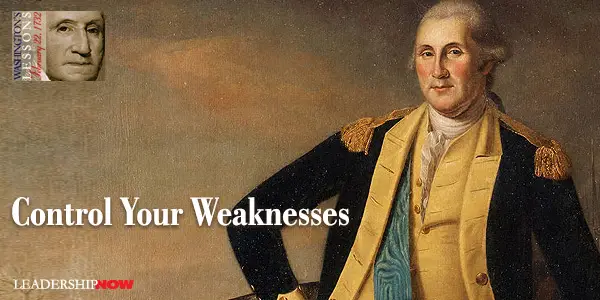
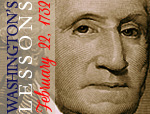 Washington’s success, in part, came from knowing his weaknesses and controlling them. Washington had a bad temper. His awareness of it allowed him to choose to end it quickly and repair any damage it had done. He did not act on his emotions, but waited until his mind was clear. Richard Brookhiser wrote, “There was a norm for a leader’s behavior, a range within which he should act, and when Washington felt he had been tugged away from it, he would tug himself back. This quality caused even those who had been on the receiving end of his temper to remember him well. They did so because as Brookhiser put it, “he had earned their admiration over the long haul by keeping his eye on the task at hand, resisting the distraction of losing his temper” and “because he had spared them much of his anger, and leavened it, when he had not, with impartiality and consideration.” 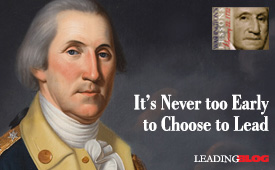 
Posted by Michael McKinney at 05:59 PM

Washington’s Lessons: 30 Surprising Facts About George Washington
Of Related Interest:
Posted by Michael McKinney at 10:10 AM

Washington’s Lessons: It’s Never Too Early to Choose to Lead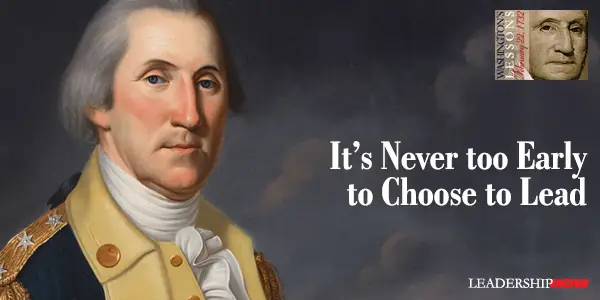
 George Washington filled many roles in his lifetime: a surveyor, frontier explorer, businessman, land speculator, soldier, farmer and statesman. A couple of examples from Washington’s childhood help to explain his successes later in life. By age sixteen, Washington had copied out by hand, 110 Rules of Civility & Decent Behavior in Company and Conversation. They are based on a set of rules composed by French Jesuits in 1595. The first rule sets the tone of the others that follow: “Every Action done in Company, ought to be with Some Sign of Respect, to those that are Present.” There isn’t a leader that wouldn’t benefit from a daily reminder of this approach. Time and time again, these rules from his childhood played out in the conduct of his public life and defined his reputation. These rules and his concern for them integrated him as a leader and bonded him with those he led. 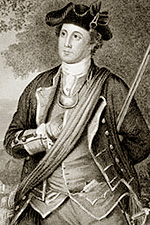 It is the mindset of a leader to work on themselves harder than they work on others. A leader’s first responsibility is governing themselves. Historian Gordon Wood has written, “Washington became a great man and was acclaimed as a classical hero because of the way he conducted himself during times of temptation. It was his moral character that set him off from other men.” Leadership is embodied in the way you look at the world and respond to it. It’s never too early to choose to lead.
Posted by Michael McKinney at 12:01 AM
02.13.13

Rebooting Work: How to Make Work— Work for You
Rebooting Work by Silicon Valley legend Maynard Webb and Carlye Adler is a sensible look at the changing nature of the workplace and how you can use emerging technologies to take charge of your career. To become a CEO of your own destiny. Less than half of Americans (47 percent) are satisfied with their work. Companies are changing too. They can no longer provide the safety nets that were expected in the last century. Employees must become more self-reliant. That of course means a workplace that rewards people for their performance rather than their time in. An organization that supports entitlement over results, writes Webb, “can limit growth and opportunity.” Giving someone a leg-up is one thing, entitlement has a permanence to it that both hinders employees and harms companies and neither performs up to their maximum potential. Webb believes that technology presents us with an opportunity. It has the power to enable people to do something about their dissatisfaction with work and move on to careers that can provide both fulfillment and financial security. “Understanding and embracing today’s technological trends is the fastest way to travel to the career of your dreams.” 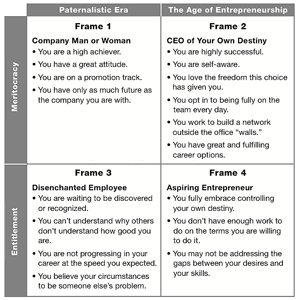 Webb presents us with four ways of looking at work. We may move from frame to frame but we tend to operate in one. They are Company Man or Woman, CEO of Your Own Destiny, Disenchanted Employee, and Aspiring Entrepreneur. Where we should all be headed, states Webb, is to the mindset of the CEO of Your Own Destiny. We are living in the age of the entrepreneur. Webb presents us with four ways of looking at work. We may move from frame to frame but we tend to operate in one. They are Company Man or Woman, CEO of Your Own Destiny, Disenchanted Employee, and Aspiring Entrepreneur. Where we should all be headed, states Webb, is to the mindset of the CEO of Your Own Destiny. We are living in the age of the entrepreneur.
Prior to the Civil War, most Americans worked in agriculture or as small merchants or tradesmen. Success was the result of self-direction, self-motivation, and self determination. In a way, everyone was self-made.Today personal and professional development is on the employee. It “requires you to be relevant every day and to be voted on to the team you want to play with.” But with this freedom come accountability. In an entrepreneurial age it is more important than ever that you think like a leader—no matter where or at what level you work. As research indicates, many people find themselves in the Disenchanted Employee frame: you are waiting to be discovered or recognized, you don’t understand why others don’t see how good you really are, your career isn’t going as expected, and you believe your circumstances are someone else’s fault. This kind of thinking is not just unproductive, it feeds on itself and keeps you just where you don’t want to be. One of the most important things you can do is to get a mentor; someone to help you see the reality of your situation and offer constructive advice to get you moving again. Webb also offers these ideas:
Of Related Interest: 
Posted by Michael McKinney at 01:55 PM
02.12.13

Where Winners LiveWhere Winners Live by Dave Porter and Linda Galindo is a book oriented towards sales professionals, but the issue it deals with is important (vital) to us all—personal responsibility.Winners live in a mindset of 100 percent accountability. Accountability, say the authors is taking responsibility for the “success and failure of everything you do—for your choices, behaviors, and actions—before you know how it will turn out” (even if you’re working with someone else). If you’re not living the personal responsibility mindset where winners live then you might be displaying what the authors call loser characteristics: The Victim: If you live in a world where circumstances beyond your control dictate your success, you have no power. The Finger-Pointer “owns” only the good. If it is good, I did it; if it is bad, you did it. The Robbery Victim always blames someone else for undermining him, for getting something he deserved instead, or for scoring a win at her expense. The Coulda-Woulda tries to take credit for what she didn’t earn by saying she easily could have, if only … (take your pick of excuses). The Guess Man knows that there is no accountability without clarity. The more vague he is with his instructions, the easier it will be to blame someone else when the job doesn’t go well. Where do you live? 
Posted by Michael McKinney at 10:06 PM
02.06.13

People are Job 1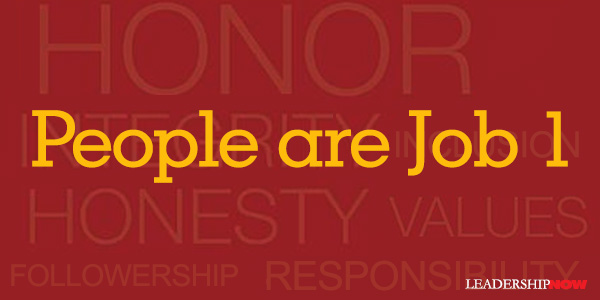
AS A LEADER if you are not devoting your time to people issues, you’re missing the big picture. Amy Lyman, author of The Trustworthy Leader, was once asked what could you do if you only had five minutes a day to devote to people issues? It is a stunning question on its face but reveals something deeper. Lyman explained that “leading is a full-time job. If you want to be a successful leader, you need to devote all of your time to people issues….Five minutes a day—or even five minutes an hour—is the wrong approach.” The problem is we tend to separate our “work” from the “people” issues; respond to people issues when asked to, but focus our intellectual talents on the mechanics of the specific tasks in front of us. Lyman makes the point that people are integral to our ability in every single area in our organizations and if we do not include consideration of people in every aspect of our work, then we are doing ourselves and our organizations a great disservice. Yet it is not uncommon to find leaders who see people as the problem—the distraction—that takes them away from their work. Our work is people. Trustworthy leaders…understand the complexity of bringing together a group of human beings to pursue extraordinary accomplishments. They are masters at guiding, directing, encouraging, and challenging people to contribute their best, in part because they ask the same of themselves. Trustworthy leaders know that their relationships with others throughout the organization are key to their success—however, success is measured. Lyman identifies six elements that both influence how a leader acts and reflect how that person thinks about being a leader: Feels Honored—Sense of honor and gratitude for being asked to lead and acknowledging the responsibility that comes with it. Inclusive—Promotes the inclusion of every person into the larger community of the organization. Ability to Value and Engage Followers—Pay attention to followers and learn from them, support their contributions and connect with them beyond their work roles. Openly Shares Information—Employee's contributions will be magnified to the degree that they have access to useful information. Develops Others—Help employees to learn, grow, and discover their talents. It’s part of who they are because they think about others more than themselves. Ability to Move through Uncertainty to pursue Opportunities—The skillful weighing of risks and rewards attached to the opportunities available is one of the most important actions that leaders can take on. When employees see their leader act with honor, feel included, choose to follow, have access to information they can use, and are supported in their development, they will support their leader’s efforts to try novel approaches and find the best way forward. Trustworthy leaders succeed in the marketplace because their trustworthiness provides them with two key competitive advantages: first, they benefit from the cooperation of employees with each other, across departments, and throughout the organization as a whole; and second they engender a deep, strong commitment among employees to the long-term success of the company, its mission, and its vision as expressed by the leader.

Posted by Michael McKinney at 08:56 PM
02.04.13

Put Your Minutes Where Your Mouth Is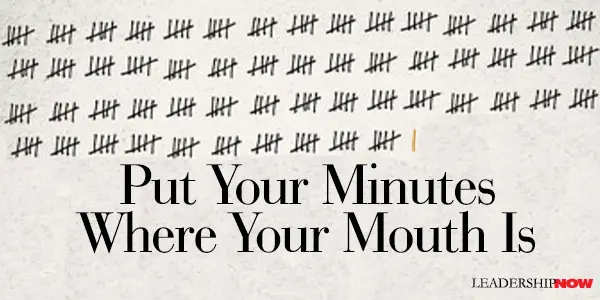
A HUGE difference between the leaders who make things happen and those who do not is how they prioritize their time. Leaders who make things happen schedule their lives around what needs to get done. Leaders who don’t make things happen do the exact opposite, scheduling what needs to get done around their lives. The difference is priorities. If meeting your deadline isn’t more important than going to the football game or getting eight hours of sleep, then you probably don’t have what it takes. I’m not saying that football is bad. I’m just saying that I simply cannot go. I just can’t get it all done in time and still catch a four-hour game. If you want to lead a team of people who are so invested in your vision that they are willing to sacrifice certain things to help you accomplish it, then the sacrifices must first start with you. Ask yourself this question: What are most people spending time on that I could probably live without? You must be intense about finishing on a deadline, and that might mean sacrificing a lot of recreational things. The key is to know thyself. You know what you need to get done, and you ought to know how long it will take you to finish it. If you’re serious about making it happen, you must design days around completing what you know needs to be completed in order to make things MOVE. Here’s another hint: 40 hours a week won’t cut it. If you’re spending half the “workday” cleaning out your inbox, maybe it's time to start waking up at five. Leadership is not exclusive to eight-hour windows. You have to set the tone. If you possess a 9-5 mentality, so will the people you are leading. Every leader I’ve met who is really killing it puts in an average of around 80 HOURS PER WEEK! Leaders have to think like entrepreneurs. It’s funny to me that I’ve never seen an entrepreneur just standing around the water cooler with a cup of coffee. The doers don’t have time for that; they’re too busy grinding away. The bottom line is that success is built by chunks of time. And a successful leader has that time built in. If you’re truly serious about making it happen, put your minutes where your mouth is. Of course, if you are that serious, you probably already do. Keep it up! What techniques do you have for blocking out distractions and getting things done?  
 
Posted by Michael McKinney at 10:46 PM
02.01.13

First Look: Leadership Books for February 2013Here's a look at some of the best leadership books to be released in February.




For bulk orders call 1-800-423-8273  Build your leadership library with these specials on over 120 titles. All titles are at least 40% off the list price and are available only in limited quantities.
Posted by Michael McKinney at 12:59 AM
|
BUILD YOUR KNOWLEDGE


How to Do Your Start-Up Right STRAIGHT TALK FOR START-UPS 
Grow Your Leadership Skills NEW AND UPCOMING LEADERSHIP BOOKS 
Leadership Minute BITE-SIZE CONCEPTS YOU CAN CHEW ON 
Classic Leadership Books BOOKS TO READ BEFORE YOU LEAD |
|